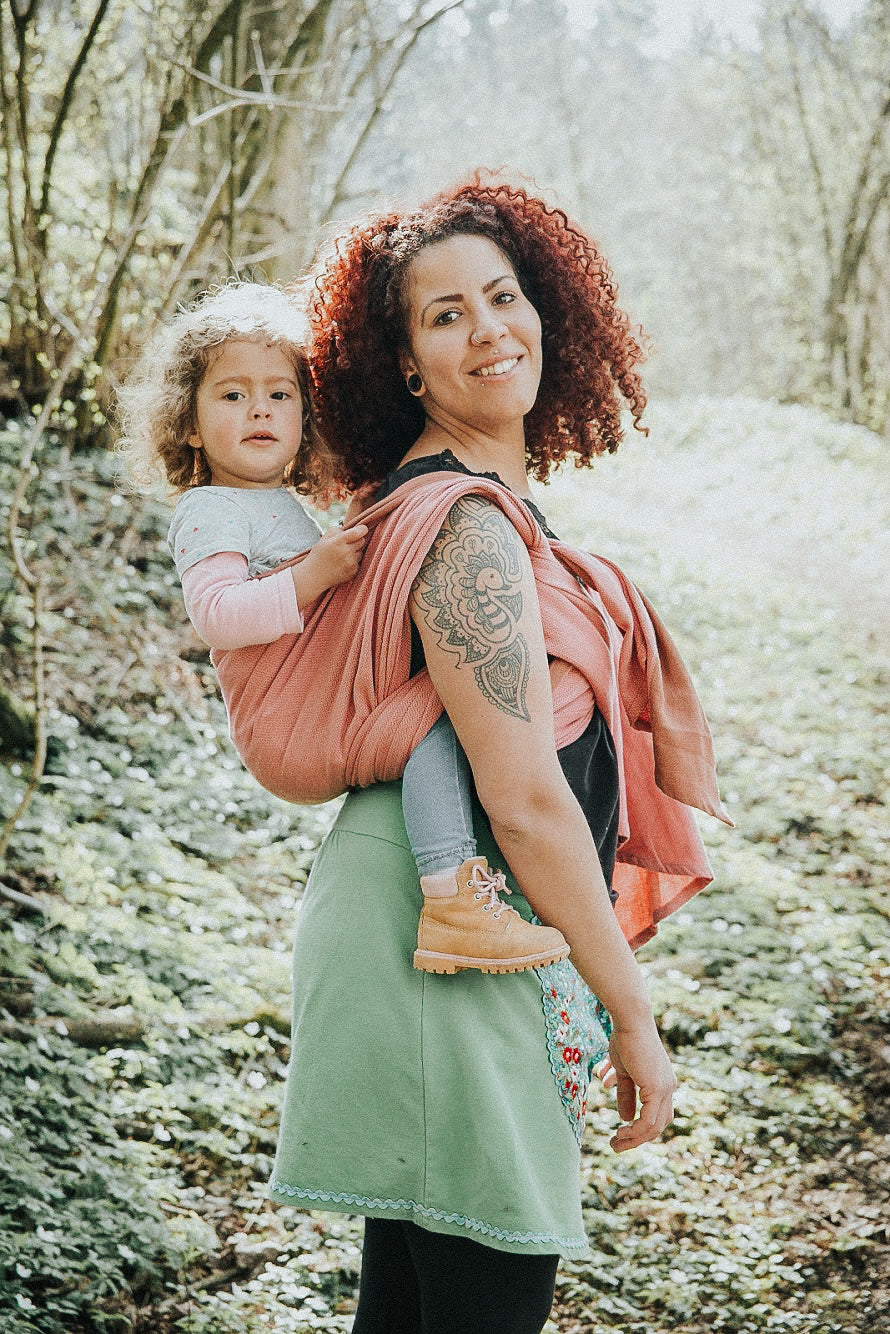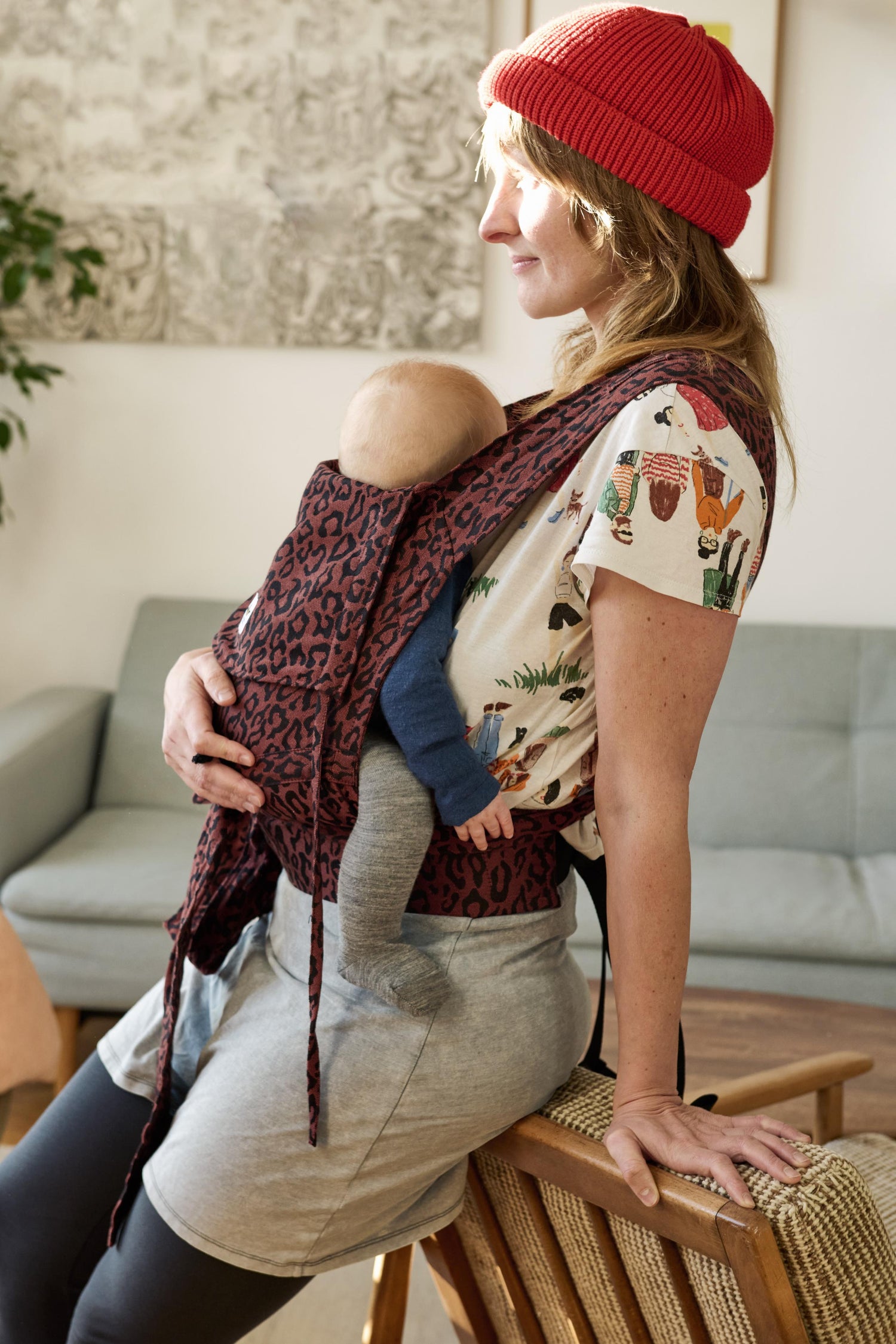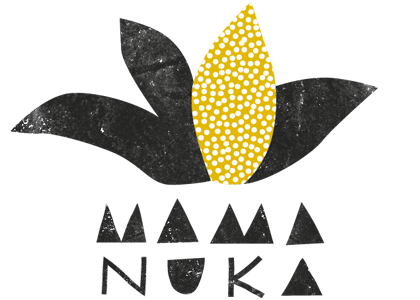
Baby carriers - new release or revival?
I first came into contact with slings during my voluntary service in Ghana. Every day I encountered peaceful babies being carried on the back or on the hip. In recent years, I have increasingly observed that in Germany, too, more parents are using slings or baby carriers. What some people label as a trend is a wonderful development towards species-appropriate and needs-based support. Since being part of the Mama Nuka team I have learned so much about the world of babywearing and I am always amazed at how many benefits babywearing brings and that it is much more of a throwback than a (temporary) trend .

80% of the world's population carry their babies
In more than 2/3 of the world's population, babies are firmly attached to mom, dad or other close relatives and carried. The reason for this is natural and trivial - man is a baby . This description is not only cute, but also scientifically based. In the 1970s, the behavioral biologist Bernhard Hassenstein described people as “active babies”. This means that babies with their grasping and clutching reflexes as well as their spread-squat posture expect to be carried evolutionarily. How many times have I seen babies bend their legs as soon as they are picked up.

Benefits of wearing
The list of babywearing benefits is long! This strengthens the parent-child bond and promotes the baby's development in many ways. When worn correctly, healthy hip development is promoted, babies explore their environment with all their senses, can snuggle up to mum or dad at any time and protect themselves from sensory overload in their security. Being there with all your senses also promotes the motor, cognitive and emotional development of our little ones. But there are also many advantages for mum and dad: baby carriers are often calmer and happier, parents have both hands free and can move around unhindered.
Carrying is not new
The fact that babies in slings and aids are increasingly shaping the cityscape is by no means a new phenomenon. Even in Europe, carrying babies was not uncommon until 150 years ago. For example, babies and children were carried in the so-called “squat coat”, especially in Thuringia. The invention of the stroller has changed the social view of carrying since 1880. In the Age of Enlightenment, for example, mother and child were increasingly separated from one another, which also had an impact on their appearance in public space. The pram offered (besides the fact that the transport of prams was possible for the first time in terms of infrastructure) the opportunity for mother and child to appear in public space and thus at the same time to differentiate themselves from the lower class (with stereotypically many children). Last but not least, the pram was also considered a status symbol. The history of wearing, on the other hand, stretches from the Egyptian high culture across the African continent, via Greenland, the Amazon region to Papua New Guinea and also has a long tradition in Europe, which is told far too rarely.

Wear from a scientific perspective
Unfortunately, due to the developments in Europe, prejudices about babywearing - such as that babies don't get enough air, are spoiled or later learn to walk - have also gained a foothold. Fortunately, there are now studies that refute precisely these prejudices.
- Researchers consider the difference in oxygen supply when wearing to be insignificant
- Babies learn to walk faster by swinging their legs
- emotional, cognitive and motor development of babies are promoted
- Bonding with reference persons makes it easier for carrying children to explore the world independently in old age
Carrying is in our nature and we are happy to be part of the world of carrying and to accompany families with our ecological Mama Nuka slings and Ringslings. So let's get into the cozy sling!
Mama Nuka is the first sling that is purely plant-based and does not contain a drop of chemicals! Find out more about Mama Nuka here:




